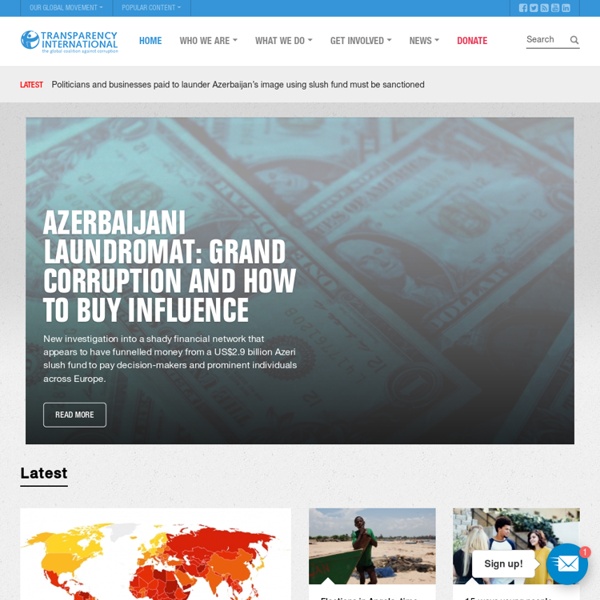



Peter G. Peterson Institute for International Economics Poynter. | Standing for journalism, strengthening democracy | Journalism training, media news & how to's Human Rights Watch | Defending Human Rights Worldwide Top 30 think tanks in the world 2011 The latest report of global think tanks rankings was released by the Think Tanks and Civil Societies Program (TTCSP) at the University of Pennsylvania's International Relations Program on January 20 this year. This annual report, named "The 2011 Global Go To Think Tank Rankings," the fifth edition of the kind, contains the most comprehensive rankings of the world's top think tanks, which has been described as the insider's guide to the global marketplace of ideas. A total of 6,545 think tanks in the world were contacted and encouraged to participate in the nominations process, and a group of over 6000 scholars, journalists, policymakers, public and private donors, think tanks, and regional and subject area specialists were involved. The nominations and rankings were based on the detailed set of criteria, including the think tanks' production of rigorous and relevant research, publications, and programs in one or more substantive areas of research. Fraser Institute Establishment: 1974
JournalNews | News & Information for Hamilton and Butler County, Ohio Identifying and Regulating Systemically Important Financial Institutions: The Risks of Under and Over Identification and Regulation Certain financial institutions are so central to the American financial system that their failure could cause traumatic damage, both to financial markets and to the larger economy. These institutions are often referred to as “systemically important financial institutions” or SIFIs. Among its numerous provisions, the Dodd-Frank Act, the comprehensive reform legislation signed into law during the summer of 2010, requires financial regulators belonging to the Financial Stability Oversight Committee (FSOC) [1] to designate those financial institutions that are systemically important.[2] Such SIFIs are to be supervised more closely and potentially required to operate with greater safety margins, such as higher levels of capital, and to face further limitations on their activities. This policy brief is intended to assist the Fed and the FSOC with this difficult task. 1. 2.
Center for American Progress Huffington Post Doubles Down on Social Media: Tech News and Analysis « The Huffington Post gets a lot of criticism for the way it runs its digital content business, including its “crowdsourcing” of free content, which has led to a class-action lawsuit by a number of bloggers who now want to be paid in the wake of the site’s $315-million acquisition by AOL. But if there’s one thing that The Huffington Post has consistently done better than just about any other traditional or new-media entity, it is to take advantage of social media tools in order to boost its reach and engage with readers in new ways, and the site has just rolled out some new features that take that effort to a new level. In a nutshell, the new features — which have been in beta testing for the past week or two, but were officially announced on Tuesday in a blog post by Huffington Post social-media editor Rob Fishman — allow users to “fan,” “like” and “follow” individual reporters and bloggers for the site, both on the site itself and via Twitter and Facebook.
PRI • Pacific Research Institute Rob Fishman: Follow Topics, Bloggers and Reporters: A New HuffPost Feature These days, even the most diligent newsreader can have trouble keeping up. Between newspapers, blogs, apps, RSS, Twitter and Facebook, the options can seem endless. And yet, frustratingly, it's the story we most care about that so often slips through the cracks. That's why HuffPost is now allowing readers to follow topics, reporters and bloggers on the site and across social platforms. Want a tweet every time Arianna blogs? It's all as simple as the click of a mouse. Follow Topics You might have already noticed the encircled + icons beside story tags. How does this all work? We're using the latest technologies offered by both Facebook and Twitter's application programming interfaces (APIs) to publish automatically and directly to those platforms. We send updates to your News Feed by using Facebook's Open Graph protocol, automatically generating pages for each of the important topics we cover, called Big News pages. Follow Bloggers and Reporters Choose the options that work for you.